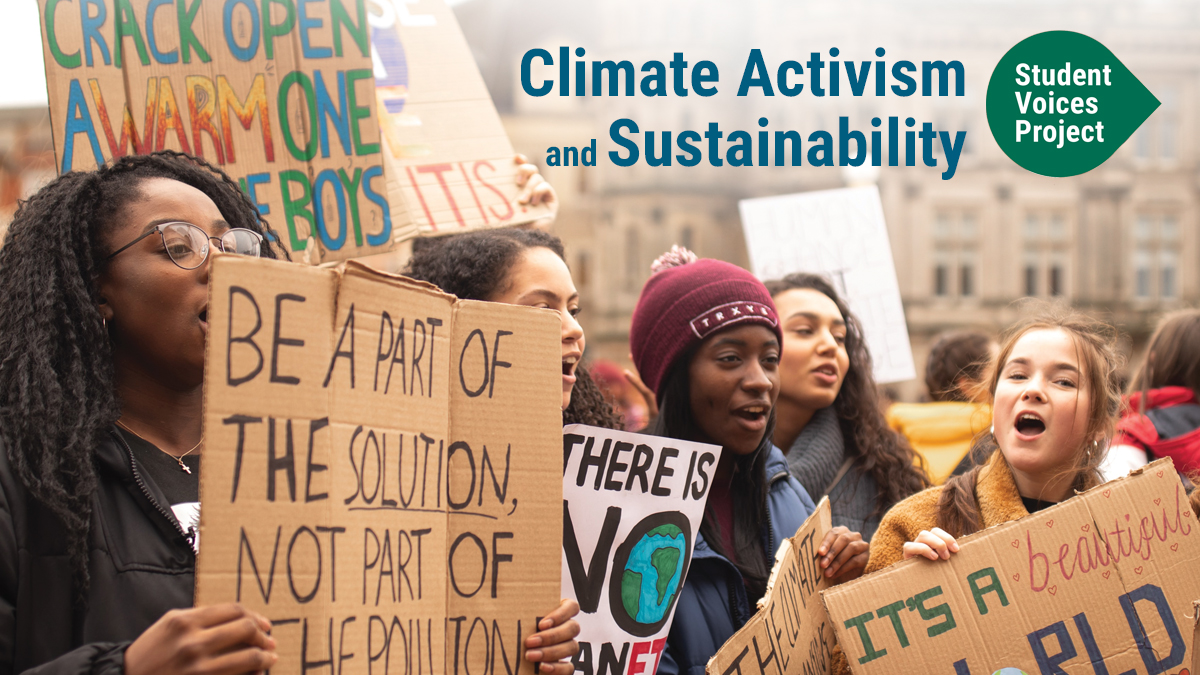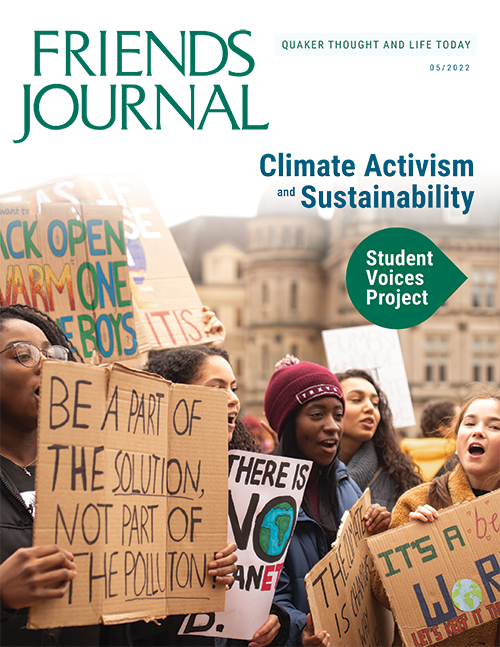Back in the last century, one of my high school teachers started telling us about an unfamiliar topic: what we then called global warming. He talked of the melting ice sheets in Greenland and warned of coastal inundations. Surely my generation would mobilize to stop this dystopian future? Alas, the super-storms and once-in-a-millennium droughts are upon us now, and the frequency and severity are only rising as tipping points are reached and weather systems shift in unpredictable ways. I’m an optimist by nature, and I hope—perhaps naively—that we will still be able to adapt as a species.
If there’s ever a topic for which we older Friends might step aside and listen to younger voices, it is climate change. The political and social challenges that current high schoolers will face in coming decades will be even more severe. There will be famines, wars, and the displacements of millions of people around the globe because of climate change.
So it is only fitting that much of this issue is given over to our ninth annual Student Voices Project. Thirteen middle- and high-school-aged students wrote for us about their personal experience with climate activism and sustainability. We’ve got climate strikers and media producers alongside budding activists who are finding small ways to raise awareness and make a difference.
The rest of the magazine is also devoted to climate activism and sustainability. Paul Buckley gets us started off and grounded with an article on the spiritual dimensions of social action. He explains how abolitionist Friends in the nineteenth century looked hard at the sources of slaveholding—the greed and spiritual blindness—and used that perspective to organize a movement that could both sustain itself against withering attacks and also identify when new manifestations of oppression threatened to undermine apparent successes.
Pamela Haines takes up the reins, citing abolitionist John Woolman, and examines the economic roots of our current climate emergency. Liana Irvine, a member of Friends Committee on National Legislation’s youth program who also works in theater, shares how the arts can be used to bring people together to address the issue. Lest it all seem overwhelming, Shelley Tanenbaum of Quaker Earthcare Witness shares how she’s been able to find hope through the years.
We only have so much room in the print magazine, and there are six more new feature articles on this topic at Friendsjournal.org/online. These articles are not also-rans by any stretch; the authors are a bit of a who’s-who of Friends working on climate activism.
This issue also includes our biannual Young Friends Bookshelf, now conveniently organized by suggested reader age. The editor of these columns, Eileen Redden, has also put together a best-of list called “Ten Picture Books about Family That Should Be in Every Meeting’s Library,” which you can find online at Fdsj.nl/ten-books. If we want families to come to our meetinghouses, we have to be inviting to children, and having the right books available for these young visitors is an easy way to be accommodating.




Comments on Friendsjournal.org may be used in the Forum of the print magazine and may be edited for length and clarity.